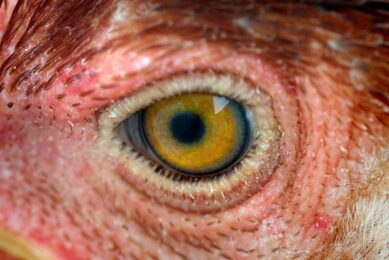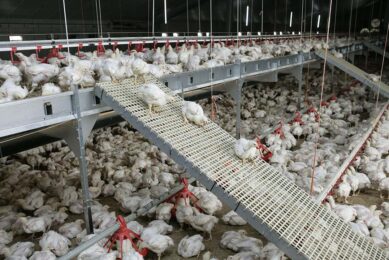Puzzle solved: Chickens that are half male, half female

A puzzle that has baffled scientists for centuries – why some birds appear to be male on one side of the body and female on the other – has reportedly been solved by researchers.
The research, which involved studying rare naturally occurring chickens with white (male) plumage on one side and brown (female) plumage on the other, sheds new light on the sexual development of birds.
It was previously thought that sex chromosomes in birds control whether a testis or ovary forms, with sexual traits then being determined by hormones.
The researchers, however, identified differences between male and female cells that control the development of sexual traits. The scientists have named the phenomenon, cell autonomous sex identity (CASI).
The study from The Roslin Institute at the University of Edinburgh, which receives key funding from the Biotechnology and Biological Sciences Research Council, is published in the journal Nature.
The findings, which are scientifically revolutionary in the field, may also be relevant to why males and females differ in behaviour and in susceptibility to disease.
They could also lead to improvements in poultry production – identification of some of the molecular differences between male and female cells should lead to better tests for sexing embryos prior to hatch. It might even be possible to devise ways of obtaining the growth characteristics of male birds in females, with improvements in feed efficiency and productivity that could contribute to future food security.
“This research has completely overturned what we previously thought about how sexual characteristics were determined in birds. We now believe that the major factors determining sexual development are built into male and female cells and derive from basic differences in how sex chromosome genes are expressed. Our study opens a new avenue for our understanding of sexual development in birds,” said Dr Michael Clinton, who led the study.
“It also means we must now reassess how this developmental process occurs in other organisms. There is already some evidence that organs such as the heart and brain are intrinsically different in males and females and birds may provide a model for understanding the molecular basis for these gender differences,” Clinton added.
The group will now study the molecular mechanisms underlying the differences between male and female cells with a £800,000 grant from the Biotechnology and Biological Sciences Research Council (BBSRC), the UK’s leading biosciences agency.
Source: The Roslin Institute of the University of Edinburgh
Join 31,000+ subscribers
Subscribe to our newsletter to stay updated about all the need-to-know content in the poultry sector, three times a week. Beheer
Beheer








 WP Admin
WP Admin  Bewerk bericht
Bewerk bericht